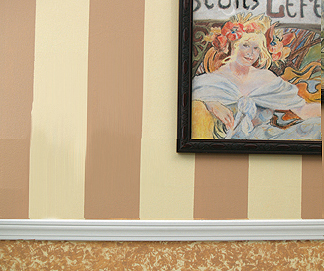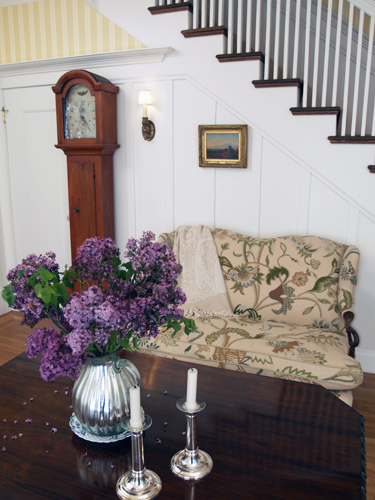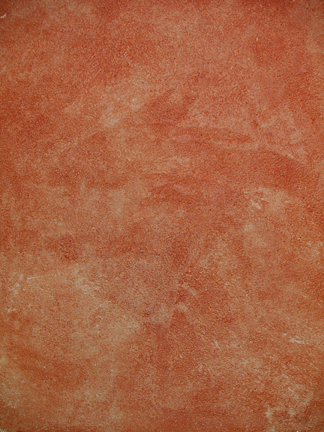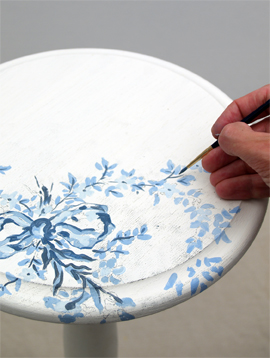Mission Style
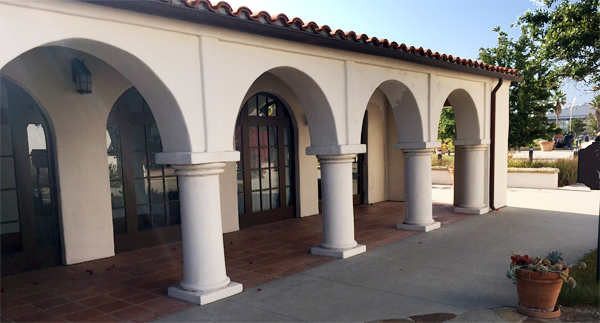
The early part of the twentieth century witnessed a design revolution inspired by the Arts and Crafts philosophy of William Morris, who reacted against dehumanized industrial production to create an aesthetic based on simplicity, honesty, and artisanship. In Europe and North America, architects and furniture designers took Morris’s ideals to heart. But while Morris looked to medieval British tradition for inspiration, American designers like Frank Lloyd Wright, Gustav Stickley and Elbert Hubbard drew on homegrown materials and motifs.
One result of this regional focus was the Mission Style, which combined Arts and Crafts principles with elements taken from the Spanish mission architecture of the American Southwest. Mission homes were most popular between about 1890 and 1920, and adorned basic outlines of squared-off white stucco with Mediterranean detail like red tile roofs, parapets, arched entry arcades that recall mission cloisters, black iron balustrades, and decorative windows (round, arched, or quatrefoil).
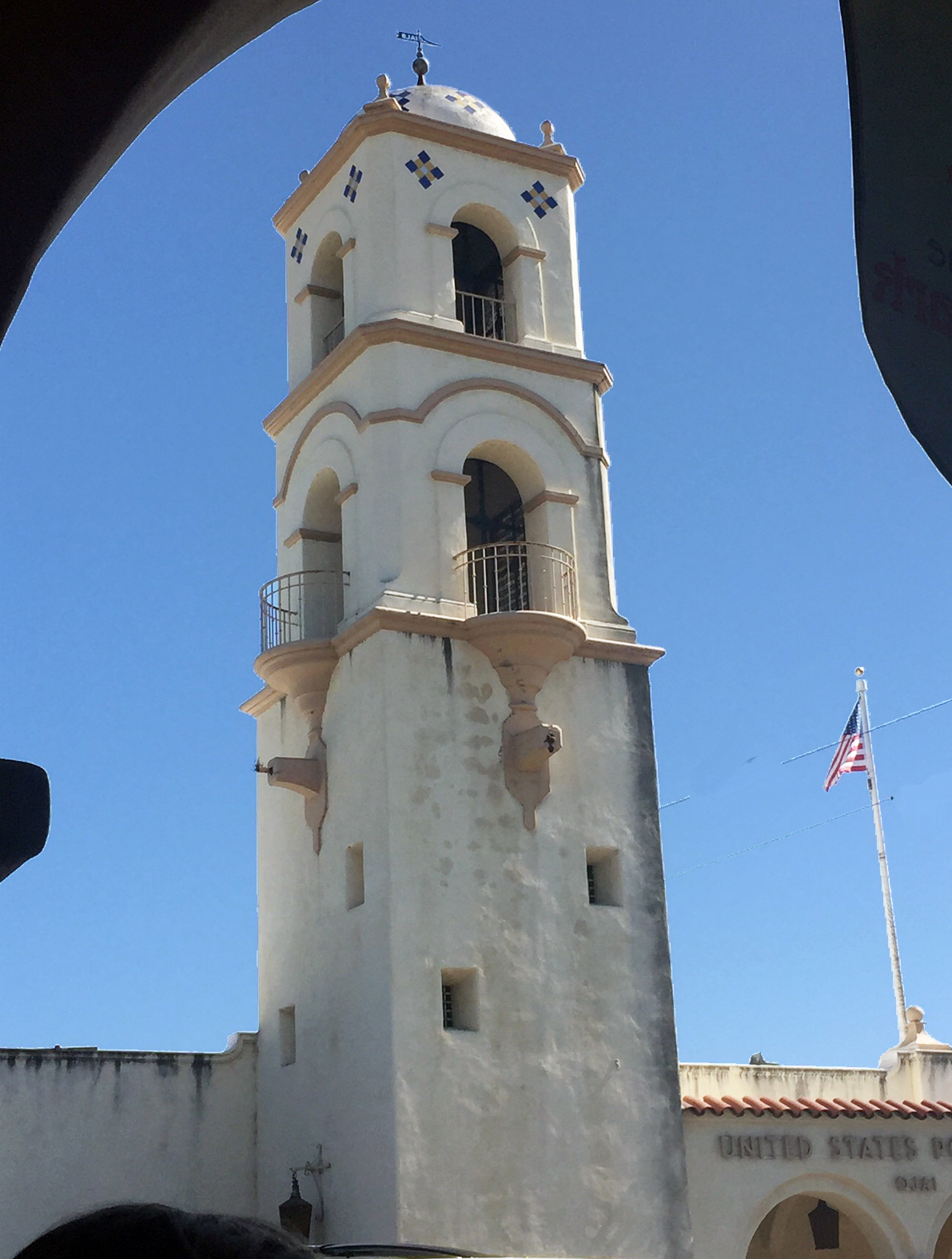
Like other branches of the Arts and Crafts movement, Mission interior design emphasized simplicity and natural materials like wood, brick, and tile -- with Spanish accents. To keep the rooms light and airy, the wall color is usually white, but pale rose or yellow are also possible. Where its Anglo-inflected cousins might use more carved wood, Mission style employs an abundance of tile -- on floors, tabletops, and around the fireplace -- primarily in natural earth tones accented by colors like deep blue and ochre. Window treatments should be plain white or off-white canvas on dark iron rods. Simple cast-iron wall sconces and Mission-style Tiffany lamps or chandeliers with classic geometric designs are the best lighting choices.
The angular lines, exposed joints, and distinctive slatting of Mission furniture, usually based on Stickley’s Craftsman designs, are easy to recognize and can be used in many different settings. In a Mission environment, dress up versatile basics like a red oak and leather Morris chair or slatted nesting tables with rustic Spanish and Southwest accents. Hand-crafted Mexican pottery and textiles, area rugs with linear patterns in muted colors, a mirror framed in dark wood, pewter candlesticks, and even religious paintings or icons help transform the unpretentious simplicity of Arts and Crafts into the rich, vibrant, and evocative Mission style.
Special Feature
Painted Stripes
Smart, bold and uplifting, striped walls can quickly transform a modest room into an exciting environment. From elegant and formal to casual and comfortable, the painted stripe offers a variety of design solutions and can be quickly adapted to your interior style. Because of the linear quality of this application rooms tend to feel larger. It works well in entrance foyers, living rooms, dining rooms and bath areas.
Elements of Mission Style
Proportion and scale, along with the interplay between linear movement and the spacious qualities of light play an integral role in creating balance and harmony within the room.
Rustic earth tones
Vibrant, colorful patterns underlie this design style.
Feature tutorial.
The Parchment colorwash. Creating the impression of aged walls, the Parchment finish evokes a feeling of history and old world charm. The color density varies over the finished surface and creates appearances of lightly mottled parchment. A soft and airy finish, the Parchment glaze is an ideal way to create mood and character in any room. I’ve found it to be an ideal solution for finishing irregular or textured wall surfaces.
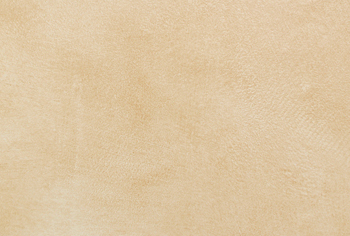
Mission Inspirations
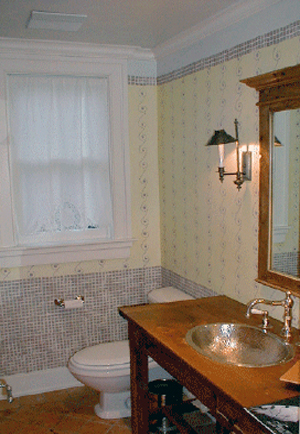 Hand painted wall paper adds a custom element.
Hand painted wall paper adds a custom element.
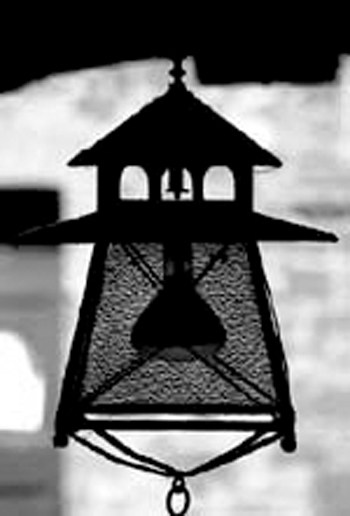 This exterior lamp exemplifies the classic Craftsman form.
This exterior lamp exemplifies the classic Craftsman form.
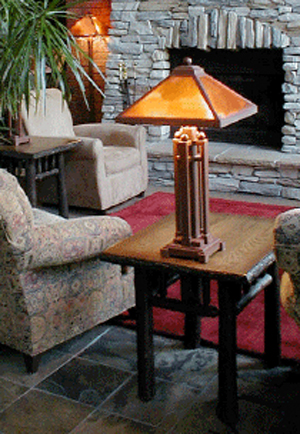 Mica lamp shade with Tiffany base.
Mica lamp shade with Tiffany base.
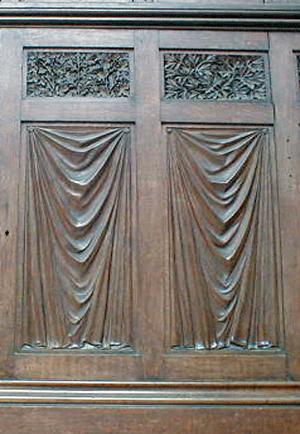 Carved wood features add character to furniture, objects and molding details.
Carved wood features add character to furniture, objects and molding details.
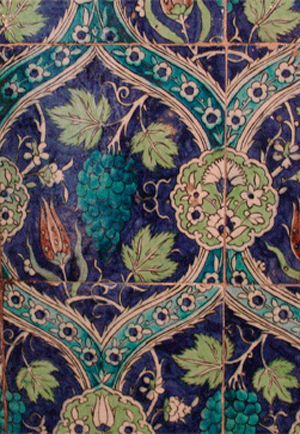 Hand glazed tiles with rich color and patterns.
Hand glazed tiles with rich color and patterns.
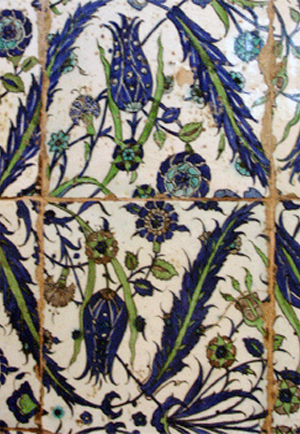 Design motifs often pull from other geographic or historic influences.
Design motifs often pull from other geographic or historic influences.
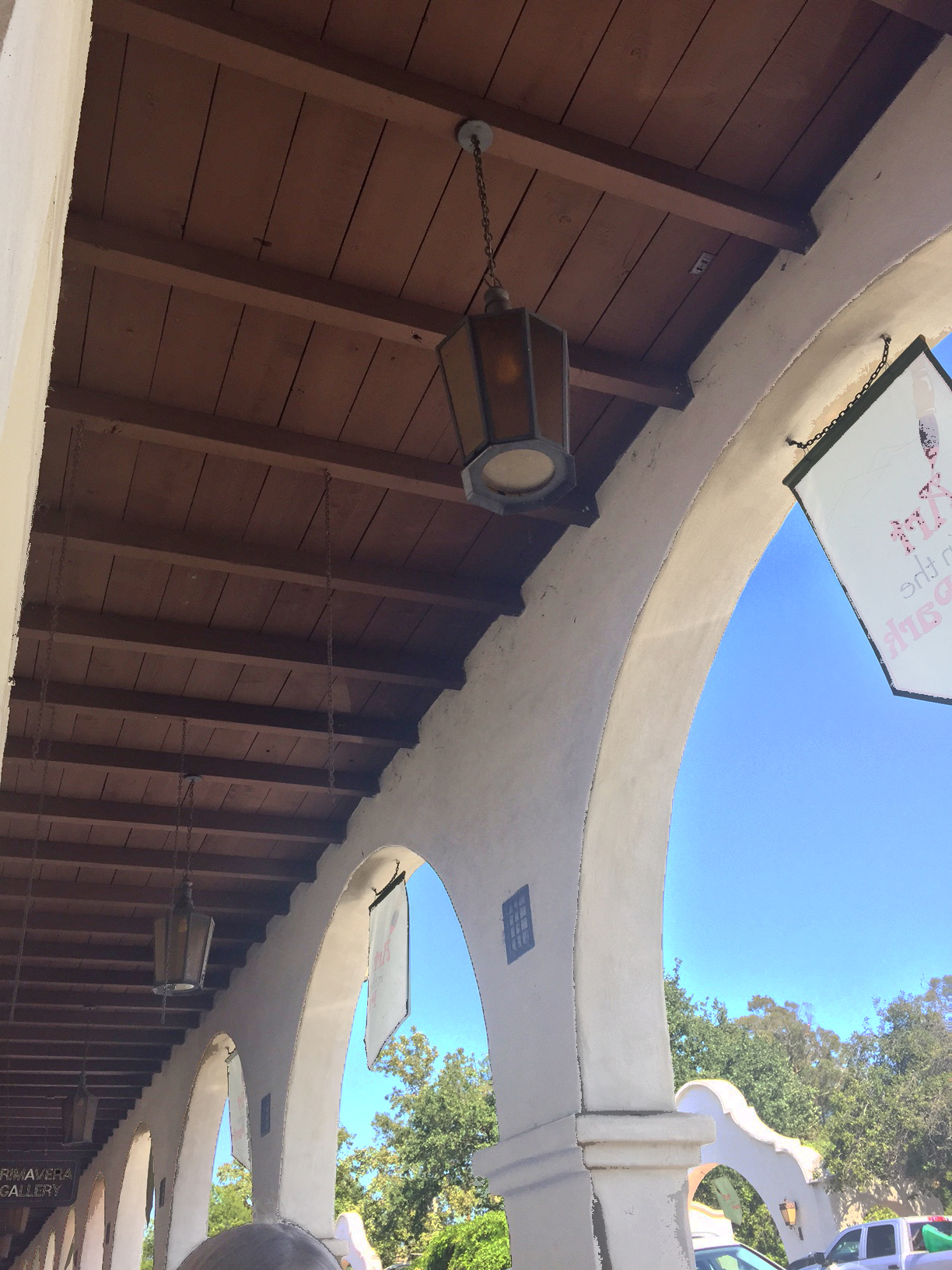
Ceilings, roofs and loggias:
In the early period, remaining true to medieval designs was preeminent. Treatments included chamfered beams, designed plaster ceilings, with occasional painting and gilding. Decoration that incorporated painted stenciling was desirable, but as the cost might be prohibitive, ceiling papers, often embossed, became much more common. In the later periods, intricate, prefabricated plaster work was frequently used.
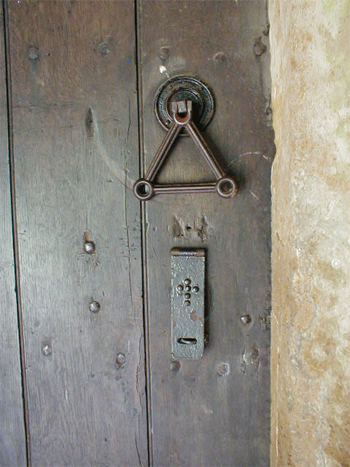
Doors:
As the entrance, and welcoming space of the house, doors and porches played an important role in the Craftsman movement.
Doors were often of plain plank construction, fitted with elaborate hinges and latches, rather than knobs, inspired by medieval forms. Later in the movement, painted motifs became popular--either freehand or stenciled--and were supported visually by the use of stained glass.
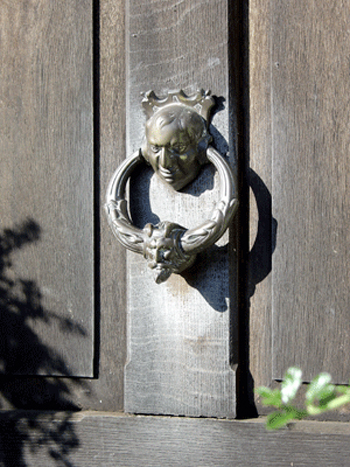
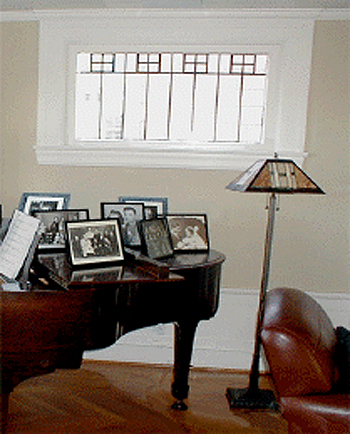
Windows:
The importance placed on light and air is reflected in the large window areas. Sash windows were commonly used, often incorporating leaded glass as a key detail. Elongated window proportions exemplified this style and one would commonly see the pairing of an upper sash bearing small rectangular panes with a tall, single-paned lower sash.
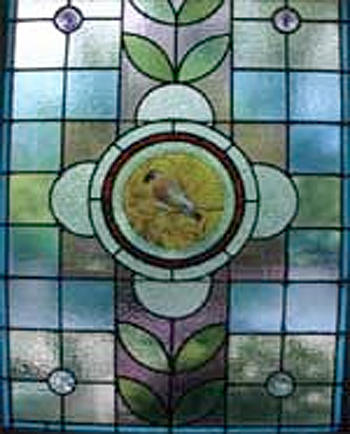

Lighting:
Lighting plays an leading role in Mission style.
Walls:
Color played an important role in the decorator's approach, and a 3 part division of the wall into dado, field and frieze was almost always employed. Full paneling on walls was used on occasion, and stenciled friezes were also favored. With the design of fine wallpapers, lead by Morris and Company of London and Warren, Fuller and Co. of NY, wallpaper was also an accepted wall covering. Early papers boasted floral and medieval designs while the later period would take on Japanese influences. Tapestry hangings were widely used in late interiors.
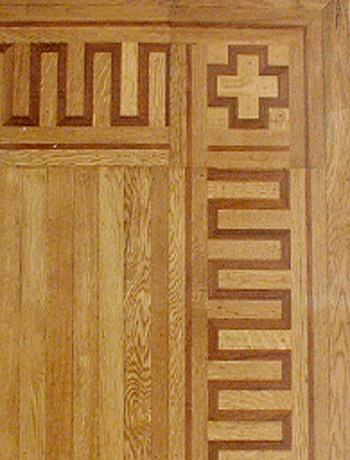
Floors:
Being true to this movement, it was generally considered that only wood or stone was acceptable for floors. Indigenous woods in America were used, oak or maple, most commonly.
Carpets were regularly used, and though authentic Indian, Turkish and Persian carpets were favored, often machine-manufactured carpets were the norm.
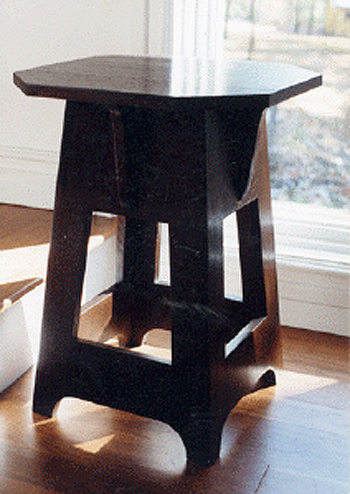
Furniture:
A strong design element of the Craftsman movement was the regular use of built-in furniture. It was practical and minimized the clutter that was common in the Victorian era. A window seat beneath a bay window or a bench and sideboard against a wall in the dining room might be incorporated into the house design, for example.
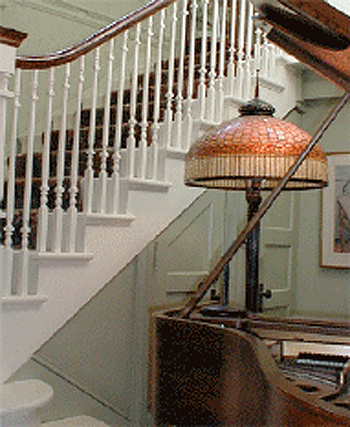
Details:
The desire for openness and light stimulated the use of stained-glass in the Craftsman environment. Doors, windows, wall partitions to lamp shades were all treated with this colorful material. With the development of the electric bulb, lighting took on a new meaning within this period. Glass in combination with fine ironwork resulted in innovative ways to accent - as well as provide functional light for - the indoor environment.
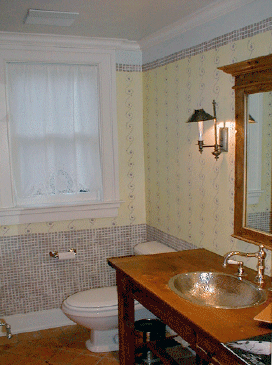
Stencilling:
Stenciled mosaic patterns and hand painted scrolls embellish this Craftsman powder room.
Early American Style
Colonial Amercians drew inspriation from their European heritage. Curent design styles would filter across the ocean and become reinventedin early America. Proportion and scale took reign over ornementation, A neutral color palette of grey blue, greens and rose pinks is readily apparent.
Stucco Rustico - Aged Plaster
Stucco Rustico is a Traditional interior and exterior textured plaster that epitomizes the rustic old world charm commonly associated with Tuscan environments. I love this treatment for its ease of application and the natural, organic glazed appearance that results when using mineral based plasters and glazes. Whether a rough application or a smooth finish, this treatment holds true to the test of time and, in fact, feels as if time itself stopped to wash the walls personally.
The Rustic Color Palette
The Rustic Style color palette falls within a distinct range of color tones and is essential in creating a successful Rustic interior. By using the appropriate color tones you can create a variety of design styles ranging from Period and Historic, regional or thematic. Color helps define our experiences within an interior and exterior environment. It affects us on a physical, emotional, and spiritual level and can be calming and passive, expressive and vital.
Painted Floral Details
Floral patterns used as accents in fabrics and furniture are common place details in the English Country home. These graceful and organic patterns complement the cozy interior of this style and work particularly well with lace window treatments, an heirloom tea service set and the natural and rustic charm of wooden ceiling beams and slightly irregularly textured walls.

